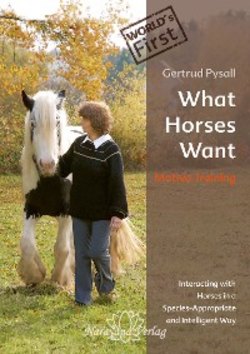Читать книгу What Horses Want - Gertrud Pysall - Страница 8
ОглавлениеForeword
Many years ago, on a sunny autumn day, a seemingly never-ending train ride took my family and me from Bavaria to a village of just 300 inhabitants on the edge of the Eifel Region. After we arrived, I found myself standing in the yard of our new home. While the movers brought our belongings into the house, I let my eyes roam over the neighbouring meadows and fields. Suddenly, a horse appeared on the other side of the wire mesh fence – beautiful, large, dark brown with a black mane and tail and a small white dot on his forehead. He gave me a friendly look. I was just nine years old, and until that moment I had never had a memorable encounter with a horse, but just then I lost my heart to “Alex.” At the same time I was scared of him, as he seemed so huge and strong. Still, I dared to stroke his warm, wet nose and was overcome by an indescribable sense of happiness. Alex started pawing the ground with his front foot and his hoof got caught in the wire mesh. As he was unable to free himself, I plucked up the courage to bend down and, with great effort, removed his big hoof from the wire mesh. At that moment I realised what I wanted to be when I grew up: a veterinarian! Unfazed by the hustle and bustle going on around me, I ran to my parents and informed them in a very serious tone of my ambition. They were the first, but not the last, to give me a belittling smile, but they stood corrected when I actually started my degree in veterinary medicine ten years later.
Such are the far reaching consequences of the magical encounter between human and horse!
Like countless other young girls, I tried to spend the majority of my spare time in the presence of horses. I avoided riding schools and stables, however, and dedicated my time to grooming and looking after “my” ponies and horses. These were privately owned and the owners allowed me to look after them. Owning a horse myself was out of the question anyway.
I have always resented how horses were usually kept and how they were treated. I felt that in many, if not most cases, something vital was missing: a true understanding of the horse as a living creature and his needs. Often, a horse was treated like a commodity which could be exchanged at any time. If he did not “perform” correctly, he was disciplined, frequently quite ruthlessly.
The established training methods seemed more than questionable to me, and Horst Stern’s (Remarks About Horses) encouraged me to give up riding entirely.
Years later, when the first “horse whisperer” appeared on the scene like a shining star, I began to be hopeful, but a certain discomfort remained. After reading this book by Gertrud Pysall, I now know why: many so-called “horse whisperers” clearly have not learned how to communicate with horses, to interact with them using only gestures and vocabulary from the equine communication system, even if they try to give this impression.
What Horses Want by Gertrud Pysall will inspire everyone who feels a connection with horses. If you are open, curious, and maybe even willing to critically examine your own behaviour, this book will open up a unique, exciting and previously undiscovered world, where it is possible for human and horse to interact harmoniously and where the horse is shown the understanding, respect and love this beautiful creature deserves!
With this in mind, I hope that Gertrud Pysall’s book will be widely distributed and will lead to a paradigm shift in the equestrian world.
Shiela Mukerjee-Guzik, DVM
